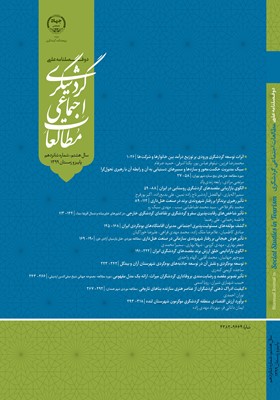تأثير شاخص های رقابت پذیری سفر و گردشگری بر تقاضای گردشگری خارجی در کشورهای خاورمیانه و شمال آفریقا (منا)
محورهای موضوعی :
1 - هیات علمی جهاد دانشگاهی
2 - دانشگاه سیستان و بلوچستان
کلید واژه: کشورهای منا#تقاضای گردشگری#رقابت­, پذیری#الگوی پنل دیتا.,
چکیده مقاله :
امروزه نقش صنعت گردشگری در ایجاد زمینههای تعامل بین کشورهای دنیا مقولهای پذیرفته شده است و کشورهای توسعهیافته و در حال توسعه آن را یکی از رویکردهای محوری ایجاد اشتغال پایدار، افزایش درآمد سرانه و تنوع در منابع ایجاد درآمد میدانند. شاخصهای مختلفی بر توسعه این صنعت و میزان گردشگران جذب شده توسط کشورها، تأثير گذار است. باتوجه به اهمیت این موضوع، در این پژوهش تأثير شاخصهای رقابتپذیری سفر و گردشگری بر تقاضای گردشگری خارجی در کشورهای خاورمیانه و شمال آفریقا بررسی میگردد. جهت سنجش تأثير این شاخصها، از مدل پانل دیتا برای سالهای 2019-2011 و برای 15 کشور خاورمیانه و شمال آفریقا (منا) که اطلاعات مورد نظر آنها در گزارش رقابتپذیری سفر و گردشگری موجود است، استفاده میگردد. مطابق نتایج این تحقیق سه متغیر "زیرساخت حملونقل هوایی"،"بازار کار و منابع انسانی" و "رقابتپذیری قیمتی" بالاترین تأثير را در جذب گردشگران خارجی به کشورهای مورد بررسی، داشتهاند.
Today, the role of the tourism industry has been accepted as a category in creating fields of interaction between the countries of the world. Tourism in developed and developing countries is one of the basic approaches in creating sustainable employment, increasing per capita income, and diversifying sources of income. Various indicators affect the development of this industry and the number of tourists attracted by countries. Due to the importance of this issue, this study examines the effect of travel and tourism competitiveness indicators on foreign tourism demand in the Middle East and North Africa. The panel data model was used to measure the impact of these indicators for 15 countries in the Middle East and North Africa (MENA) for the years 2011-2019, whose information is available in the Travel and Tourism Competitiveness Report. According to the results of this study, the three variables "air transport infrastructure", "labor market and human resources" and "price competitiveness" had the highest impact on attracting foreign tourists to the surveyed countries.
